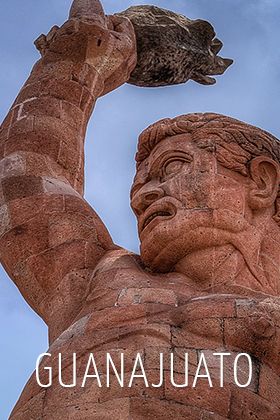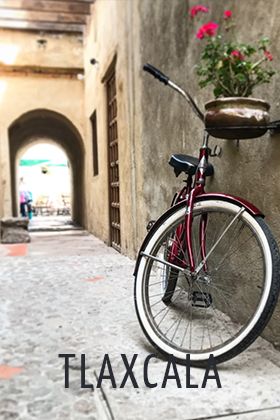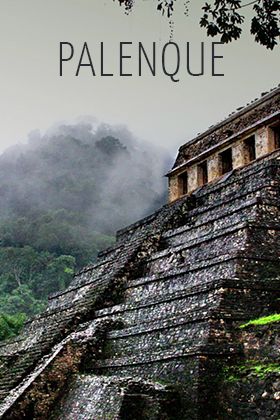Valladolid and nearby archaeological sites
by: Travel by México

Valladolid and nearby archaeological sites
by: Travel by México
In warm weather, between the rich forest of precious woods, 160 kilometers from the city of Merida and 40 from one of the new 7 marvels the world, Chichen Itza, you can find a destination well worth visiting: Valladolid, also known as La Sultana del Oriente, in the state of Yucatan.
Here there is no surface water, but abundant groundwater flows between 35 and 145 meters deep, which have been granted to Valladolid with a lot of sinkholes and caves that are a true gift of nature. The ages have transformed this soil consisting of 3 layers of limestone: the first, very special and varied rock formations; the second of calcareous material in sheet form, like scales, and the third layer of limestone containing fossils of shells and mollusks, inclusions of dolomite, clay and iron oxide.
Walking along these trails, between the trees of mahogany and cedar, and regional varieties of ceiba, pitch, Chechen, Jabin, Chaco, Colorado, balche, bojón, pucté, tzalam, and ramoncillo and many others, we can take a journey to learn about the remote past of the Earth, showing us the natural wealth of the region and revealing the legacy of one of the most extraordinary civilizations that ever existed: the Maya.
Chichen Itza is perhaps the most impressive testimony of that ancient culture, keeping their buildings in a harmonious architectural style to be admired. There are historical records that tell about religious processions to worship in their temple to Kukulcan, until the sixteenth century.
This Mayan deity, which according to testimony reported by Diego de Landa, existed as a person who came by sea from the west with the Itzaes to Itza Chichen (not known whether with them or on different dates). He became the leader and founder of their civilization. Upon leaving, heading to the highlands of Mexico, Kukulcan stopped in Champotón, which is also another temple erected in his honor by the sea, leaving behind one of the Mayan mysteries to date that intrigue researchers.
Chichen Itza is an enigmatic place that still bears countless secrets of the Mayan science between the walls of carved rock. It has been proven in many cases that the temples and plazas of this archaeological site are in perfect harmony with the stars. The Castle, for example, marks the summer solstice equinoxes perfectly. The building of the Snail, also known as the Observatory, is significant because it allows the perfect tracking of the cycles of the moon, which establishes suitable dates for planting and harvesting. Tourists can learn about the 17 buildings in this archaeological site, many of which have been partially restored and rebuilt following both the style and the materials used by the ancient Maya.
In the central part of the imposing Castle, the Temple (pyramide) of Kukulcan is further distinguished by being the tallest structure built by the Maya. In its 4 sides you appreciate the so familiar staircase, adorned with balustrades, being watched in the northern part by 2 huge mythical feathered serpent heads. The magnificence of this site is framed by two beautiful cenotes or large natural pits, fed by rainwater filtered through the rock for thousands of years. And although Chichen-Itza shines even today as one of the Seven Wonders of the Modern World, besides being declared a World Heritage Site by UNESCO since 1988, there are other known archaeological sites close to Valladolid. An opportunity not to be missed!
Ek Balam (40 km away), whose name means lack Jaguar or Tiger Star, is another very unique archaeological site because of the characteristics of its architecture and urbanization. Through a short road lined with trees of ramon, pochote, and cocoyol, we come to one of the few entrances that open up to two walls that surround this ancient Mayan city. As we crossed the barrier created by human hands, it opens our eyes to a large spacious plaza flanked by hills, with extensive and impressive platforms, vaulted buildings, and a ball game. Time has asserted its way through the erosion of trails and carved stones, but we still see bands of glyphs and the figures of distinguished people, during the glory days, they occupied a throne in this Mayan city.
In a one hour trip, tourists can also learn about the archaeological sites of Coba, one of the most beautiful and largest Mayan ruins, or Tulum in the State of Quintana Roo. Coba is protected from the dense jungle. Its name means "water stirred by wind" and it was one of the Mayan cultural and social centers through its control of trade routes of the time. It flourished between 600 and 900 AD, coinciding in many aspects of architecture or decoration with the great city of Tikal in Guatemala. Around here there are wonderful and spectacular archaeological sites such as Chichen Itza (25 minutes), a new wonder of the world and the site currently attracts more visitors in the country, Ek Balam (15 minutes) just 40km north of Valladolid and the archaeological sites of Coba and Tulum in Quintana Roo (60 minutes) on the 307 highway to the Riviera Maya.
And you should not miss the cenotes (a deep and natural well or sinkholes) and caves that are around Valladolid! The most visited are the Zací cenote, located in the city itself, and Dztinup cenotes (X’keken and Samula), X-Zone Canche in Ek Balam or those in the tourist center Suytun bearing the same name. Among the most visited caves are those of Balankanche, where there stands a huge pillar consisting of a stalactite and stalagmites resembling a large ceiba (the sacred tree of the Maya).
Among the most representative colonial buildings of this destination are the Cathedral of St. Servatius in the Main Square, the Museum of San Roque, the Municipal Palace, the Casa de la Cultura, the Temple of San Juan de Dios and the churches of Santa Lucia and San Juan, the former convent of San Bernardino of Siena, the neighborhoods of Candelaria and Santa Ana and Friars Alley. A city so charming it is definitely the perfect setting to enjoy delicious typical dishes of the region.
Valladolid offers a trip of smells and tastes like no other! Turkey de monte en sak-mol, panuchos, papadzules, escabeche oriental, smoked sausage, lime soup, and, of course, the famous roasted pig of Valladolid are just some of the delicious recipes we can try in one of the many restaurants ready to serve with great hospitality to visitors. How about a sweet dessert? Here we try the white dish, sweet potato with coconut and the sweet papaya. Also there are a variety of exotic fruits with unique flavor, such as Pataya, with pink and white skin with black seeds inside, or the custard and the star apple. Sultana of the East, the Mayan land where a cup of Xtabentun, a liqueur made from the flower of the same name, mixed with anise and honey. Cheers from the beautiful city of Valladolid!

















